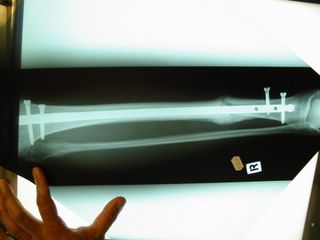Combined THEMIS and ground-based observations of a pair of substorm-associated electron precipitation events
JOURNAL OF GEOPHYSICAL RESEARCH, VOL. 117, A02313, 12 PP., 2012doi:10.1029/2011JA016933
Key Points
- Combined instrument observations of substorms
- Determination of the flux and spectrum of electron precipitation during substorm
- Observations of substorm precipitation characteristics and evolution
Mark A. Clilverd
British Antarctic Survey, Cambridge, UK
Craig J. Rodger
Department of Physics, University of Otago, Dunedin, New Zealand
I. Jonathan Rae
Department of Physics, University of Alberta, Edmonton, Canada
James B. Brundell
Department of Physics, University of Otago, Dunedin, New Zealand
Neil R. Thomson
Department of Physics, University of Otago, Dunedin, New Zealand
Neil Cobbett
British Antarctic Survey, Cambridge, UK
Pekka T. Verronen
Finnish Meteorological Institute, Helsinki, Finland
Frederick W. Menk
University of Newcastle, Callaghan, Australia
Using ground-based subionospheric radio wave propagation data from two very low frequency (VLF) receiver sites, riometer absorption data, and THEMIS satellite observations, we examine in detail energetic electron precipitation (EEP) characteristics associated with two substorm precipitation events that occurred on 28 May 2010. In an advance on the analysis undertaken by Clilverd et al. (2008), we use phase observations of VLF radio wave signals to describe substorm-driven EEP characteristics more accurately than before. Using a >30 keV electron precipitation flux of 5.6 × 107el. cm−2 sr−1 s−1 and a spectral gradient consistent with that observed by THEMIS, it was possible to accurately reproduce the peak observed riometer absorption at Macquarie Island (L = 5.4) and the associated NWC radio wave phase change observed at Casey, Antarctica, during the second, larger substorm. The flux levels were near to 80% of the peak fluxes observed in a similar substorm as studied by Clilverd et al. (2008). During the initial stages of the second substorm, a latitude region of 5 < L < 9 was affected by electron precipitation. Both substorms showed expansion of the precipitation region to 4 < L < 12 more than 30 min after the injection. While both substorms occurred at similar local times, with electron precipitation injections into approximately the same geographical region, the second expanded in an eastward longitude more slowly, suggesting the involvement of lower-energy electron precipitation. Each substorm region expanded westward at a rate slower than that exhibited eastward. This study shows that it is possible to successfully combine these multi-instrument observations to investigate the characteristics of substorms.























